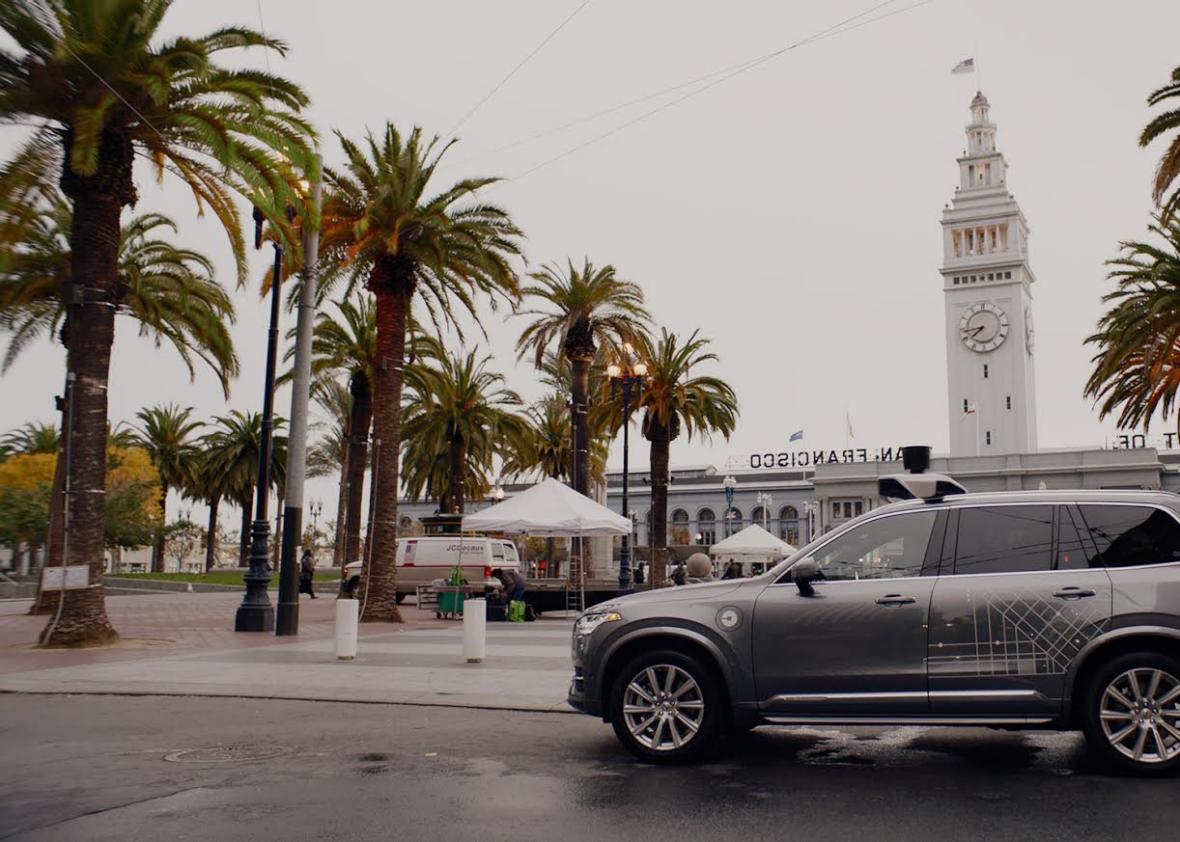On Wednesday morning, Uber rolled out its latest self-driving Volvo XC90s on the streets of San Francisco.
Before noon, one of them had rolled through a red light downtown with a pedestrian in the crosswalk.
The company claims that the car was being operated at that moment by a human engineer, who has been suspended. In San Francisco, as in the Pittsburgh trial that has been underway for several months, the company’s cars drive themselves with a pair of engineers ready to take over at a moment’s notice. It’s not clear why, in a test designed to “improve the technology through real-world operations,” the engineer had taken control or hit the gas at the red light.
I contacted Uber for comment and will update if I hear back. The video, captured and posted by—if you can believe it—a local cab company, was first published by the San Francisco Examiner. The paper also noted that a local journalist had watched one of Uber’s Volvos lurch into an intersection on a red light in a separate incident a couple hours later. (You can see the car halfway into the intersection on a red light in her photo.)
Needless to say, it’s not a great look for the company, which began offering some customers the opportunity (at random) for an autonomous vehicle without first getting approval from the state of California, but sought to counter the notion that it was again acting above the law. Even if the decision to push ahead without a permit is legal, it’s in line with Uber’s tried-and-true strategy of flouting regulations until they can be changed.
In a statement on Wednesday announcing the trial, Anthony Levandowski, the chief of the company’s autonomous vehicle unit, argued that California’s rules only apply to cars that can drive without human control. The state defines “autonomous technology” as software that can drive a vehicle “without the active physical control or monitoring by a human operator.” Uber’s Volvos, which have a human engineer at the wheel, aren’t sophisticated enough to be in that category, Levandowski said.
Moreover, he noted, several cities and states had already “made clear that they were ‘pro technology’ ”—and he hoped that California would follow suit.
Brian Soublet, the chief counsel of the California Department of Motor Vehicles, told Uber that the state would take legal action against the company if it didn’t stop the launch immediately and seek a permit. The state has permitted 20 companies, including Google, to test 130 AVs on public roads.
One of the objectives of the state’s permitting process, Soublet noted, is to “have adequately trained, qualified test drivers on the safe operation of the autonomous vehicle technology.” In other words, to prevent exactly what Uber says happened on Wednesday morning in San Francisco.
